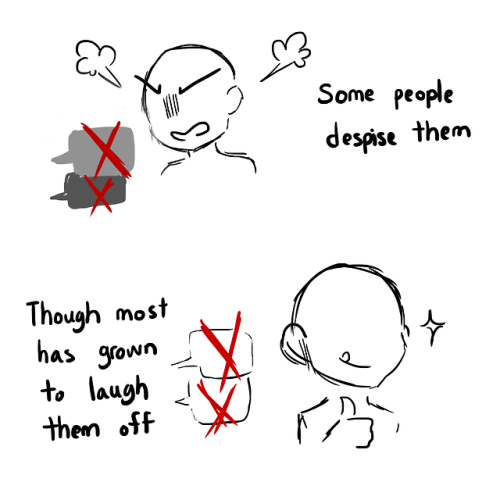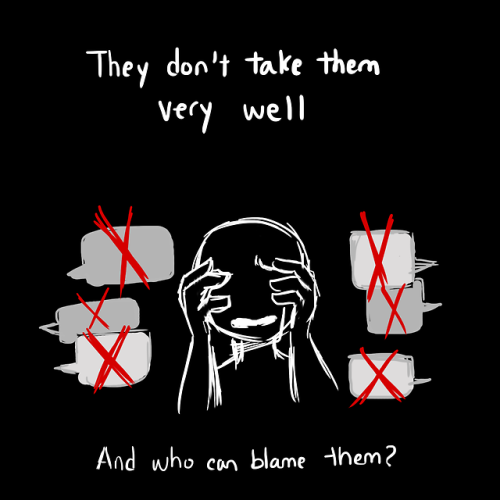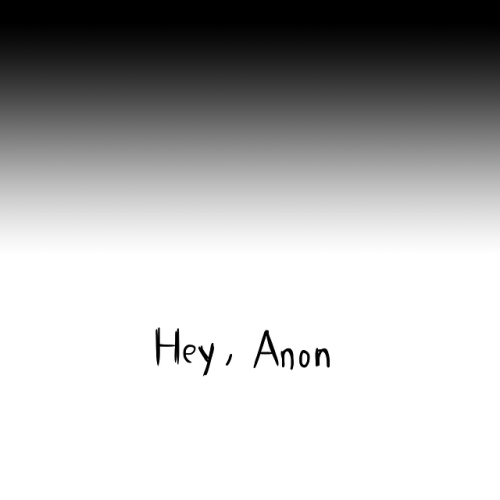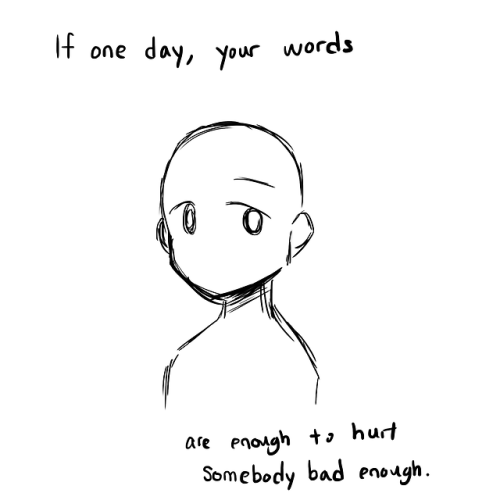Oh, Anon Tsk Tsk Tsk 🤦♀🤷♀🤷♂🤦♂
Oh, Anon tsk tsk tsk 🤦♀🤷♀🤷♂🤦♂
You shipping reylo is ok but you writing anything is not. Have you read your own writing? That Secret Santa fic was such a trash, even the garbage men won't want to pick it up. People have talents, but you certainly don't have that for writing or anything. Good thing you seem like your a rich girl and there are things you can afford but forcing yourself to write? Just give it up already. Met us all have a good Christmas. Spare us!!!!
Hello! Thank you for your feedback and thank you for taking the time to read the fic I wrote even if you thought it was trash. As far as writing is concerned, I never said I was any good at it but I certainly think I'm not that atrocious. Thank you for being a fan and for being concerned about my well-being. I wish you a Happy Christmas and hope that you continue to give me feedback on whatever it is I do because you seem to know better and I really respect your wise counsel. 💕
Love and light. 💕

More Posts from Aedysa and Others
Guys there was just a magnitude 6.1 earthquake in the Philippines
The epicenter was around 60 km from where Iive, in Castillejos, Zambales. It occured around 05:11 PM and lasted for 30 seconds. Initially it was reported at 5.7, but it was raised to 6.1 in later reports. Various international reports list it as 6.3 or even higher.
Thankfully, it happened on land, far away from the sea, so there are no impending tsunamis. However, as of writing several aftershocks have been recorded and fatalities have already occured.
I was still at work when it happened and I almost got stuck since I couldn’t use the stairs to go all the way down from the 36th floor of my office building due to a disability. Thankfully no strong aftershocks occured after so a service elevator was able to rescue me after I went down to the 26th floor. I am now at home and am safe, though still shaken.
Please be careful, Philippine peeps around Northern/Central Luzon!
WOW!!
Mr. Love Queen’s Choice (Love and Producer) is coming out in English soon! In the first half of 2019 it’ll be released to the UK.





I want to do this to my enemies (if ever I had one)

Level of gripping in this one hand Sode-tsurikomi-goshi: 99
The Cuckoo's Song Summary
Proposal:
Nobu: Send Letter. Demands MC why she didn't reply back.
Hide: Send letter. Woo MC in public in such a way customers gladly supports him (and perhaps they will help pressure MC to say "Yes")
Yasu: Send letter. Waits for MC. Kidnaps MC and proposes to her in private.
.
Reaction on MC's Hesitation/Refusal:
Nobu: "I NEED a reason? (You Brazen little thing) Fine then, I'll stay here in Kyoto for now, but I"ll take you with me when I get back to Owari...See to it YOU FIND that precious reason."
Hide: 😥😥 "I wonder if I came on a little too strongly." He then cooks another plan and then proceeds with Plan B.
Yasu: "You refuse...A PROPPSAL OF FINE MARRIAGE??" And after exchanging expletives, he visits MC's restaurant to bully her everyday until she snaps.
.
Turned Tables:
Nobu: Saves MC from Goons.
Hide: Plan B = Help MC's mom and invites MC to a sweet "last" date with him.
Yasu: Tells MC he will return to Mikawa.
.
MC's Response:
Nobu: She soon accepts him in many ways than one. She had NO choice anyway.
Hide: She realize Hide's efforts to woo her and realize her budding affection for him. So why should MC end it here? Why not hop on to his advances?
Yasu: MC deeply misses him that she constantly thinks of him and his absence. And when he returns, MC gladly comes to his embrace. After all, he WAITED for so long.
.
Bonus Epilogue:
Nobu: Hot! 🔥
Hide: Laugh trip! 🤣🤣😂😂🤣🤣
Yasu: SOMEONE PUT THE FIRE OUT! 🔥🔥
.
OVERALL: I ❤ THIS EVENT.
If people insult you, that you are a failure, not good enough and your WIPs are useless...it is the devil that speaks. Treat them as if they are madmen, not worthy of your attention.
If people criticize you, like grammar is lacking, need improvement on certain theme, plot or character development, that your phrasing is "wrong" you don't update as often as people hoped ...pause and think about what they say...for even in these harsh feedback you can learn something.
And should the inevitable happen that people give you harsh comment and insults, examine yourself...why did I post my work?
I want to post it for fun...That is good!
I want to post it for likes...well...
If there is anything I learned, I never post my work without accepting these facts...
...THAT THERE WILL ALWAYS BE PEOPLE WHO WILL HATE IT...
...THAT PETTY RIVALS WILL USE ANON TO ATTACK ME, THINKING IT WILL DESTROY ME...
Cheers!












On Anon hate
Plot Question Tag Game
From my other sideblog @sageandwizard
I would like to thank @practising-writer for tagging.
Rules: Summarize your WIP in one (possibly teaser-y) question
Arashi (嵐):
Would you chose your duty over everything else or your bonds despite anything else?
Tagging @pseudofaux @frywen-babbles @dear-mrs-otome @reinasescape to take part!
I feel called out 😂😭
Most people experiencing infatuation: wow he’s so cute. I’m in love. Let me tell you everything possible about him
Me, an INTP: wow. This is really inconvenient and mildly annoying. Every time I think of him serotonin floods my digestive system and it feels weird. And I could literally be filling my mind with anything other than this stupid boy right now.
I am always up to read Event Stories no matter how angsty, cheesy, outlandish or predictable they are.
But. CLIFFHANGERS.

Types of antagonists: Creating riveting opponents
FROM: https://www.nownovel.com/blog/types-of-antagonists/
There are many types of antagonists. Sometimes in a story a primary antagonist starts out as a close ally. Characters who oppose your main character’s goals aren’t necessarily ‘bad’, yet they serve a primary function: Standing between another character and their destiny. Here are 5 types of antagonists with examples and points to remember:
1. The malevolent villain
The standard malevolent villain is particularly common in the fantasy genre, yet they appear in diverse stories. The character Iago from Shakespeare’s tragedy Othello is a classic example. Iago stokes his military superior Othello’s jealousy until Othello murders his wife, suspecting her of infidelity thanks to Iago’s lies and manipulations.
Writing a malevolent antagonist who has an appetite for destruction has pitfalls. A villain who does bad for ‘evil’s sake’ could lack development and motivations that make characters believable.
To create a believable straight-up villain:
Brainstorm reasons for their actions. Sauron in Tolkien’s Lord of the Rings cycle, for example, has lost physical form and craves restored power
Explain the origin of their corruption. Tolkien shows Sauron’s rise and fall in a prologue. Over the course of her Harry Potter series (particularly the second book), J.K. Rowling shows Lord Voldemort’s descent from being Tom Riddle to the most notorious and feared member of the wizard community
Give them vulnerabilities or weaknesses. These don’t have to be emotional or physical. They could be strategic. For example, a villain who surrounds themselves with greedy henchmen is more vulnerable to betrayal if their supporters are easily swayed by material rewards
The next type of antagonist is often surprising, as we don’t typically expect strong opposition from allies or friends:
2. The ally-antagonist
It’s particularly surprising in a story when an ally turns antagonist.
For example, in the first volume of Tolkien’s fantasy cycle, The Fellowship of the Ring, the warrior Boromir joins the main characters’ quest to destroy the One Ring. Yet Boromir disagrees with destroying it, arguing with his companions that they could use its mystical power to defeat the villain Sauron, or restore the city of Gondor. When Boromir tries to take the ring from Frodo by force, its a shocking moment where a morally complex character crosses the line from ally to antagonist.
The ally-antagonist is a useful character because they show how easy it is for a ‘good’ character to make a regrettable choice. In the wider context of Tolkien’s story, it reinforces the idea that doing good is a conscious choice and not always an easy one. It also adds secondary conflicts that illustratethe ring’s corrupting power and danger.
When writing an ally-antagonist, remember to:
Show the flaws in their personality that explain their behaviour. Boromir is headstrong and, as a warrior, used to fighting for his ideals and using force
Give them compelling motivations for their choices.Boromir thinks the ring’s dark power could be harnessed for good
Ally-antagonists add shades of grey in the ‘black and white’ of ‘good vs evil’. They show us how easily people can take destructive paths that result in negative outcomes. Some also refer to this type of antagonist as a ‘hero antagonist since they may be motivated by noble ideals. Boromir’s desire to uplift his city fits this description. The nobility or virtue of this underlying wish makes his actions more tragic, since it appears his intentions are good.
3. The interfering authority figure
The function of an antagonist, in terms of plot, is to stand between a primary character and their main goals.
An interfering authority figure is thus useful for creating challenges and complications that make life harder for your protagonist.
Depending on the interfering authority figure you create, their broader story role could be:
To show something about the nature of power and authority in your book’s society (for example, how little power people have faced with totalitarian leadership)
To show cultural values or practices that stand between your character and their goals (for example, traditionalist parents who oppose a ‘love match’ marriage in romance)
A good example of this type of antagonist is Allie’s mother in Nicholas Sparks’ romance novel The Notebook. Allie is from a wealthy family and her love interest Noah works as a labourer. Because of her class-conscious and controlling nature, Allie’s mother hides love letters from Noah to Allie.
This plot point shows how the interfering authority antagonist can make selfish or value-driven choices that get in your protagonist’s way.
Another example of an interfering authority antagonist would be a border patrol officer who delays characters. Perhaps they are a power-drunk bureaucrat and intentionally delay your protagonists just because they can. This would be a useful secondary antagonist if your characters’ primary goal at this moment is making it to a meeting or other event on time.
When writing this type of antagonist, ask:
What is their reason for interfering? In Allie’s mother’s case, it’s a controlling nature coupled with class snobbery
How will this character’s actions impact your protagonist and create complications in the way of their goal (e.g. being with their lover or making a vital meeting on time)?
4. The force of nature
One of the few types of antagonists that don’t need a clear motivation is the ‘force of nature’.
If you think of disaster novels and films, it’s the unpredictable shark that attacks in Jaws. Some call this antagonist type the ‘beast’, but it doesn’t have to be a living or sentient being. In a survival story, this antagonist could be something with as little intent or motive as a treacherous mountain range your character climbs.
This type of antagonist does not have a character arc, in the sense of (for example) a backstory explaining how they became corrupt. Yet you can still include change and vary this type of antagonist to create tension and unpredictability.
To create an interesting and gripping ‘irrational force of destruction’:
Make it unpredictable. For example, on a tough mountain ascent, where your antagonist is the environment itself, perhaps clouds roll in obstructing vision and making the going tougher
Vary the intensity of opposition. On a tricky mountain ascent, create the occasional surprise rockfall or relief-bringing plateau
Make the danger real. A shark or other antagonist is only fearful and tension-inducing if you show the repercussions of not overcoming them. Maybe someone falls; maybe someone has their leg bitten off
Although not entirely an antagonist in the sense of a separate oppoenent, a character’s ‘worse self’ is also a useful source of tension and opposition:
5. The inner saboteur
In a story where a character’s main struggle is an internal struggle (e.g. drug addiction), the protagonist and antagonist are rolled into one, in a sense. Rather than the main conflict being external, the conflict takes place within a single character.
The danger of this type of antagonistic situation is that your character’s thoughts could dominate the narration, without as much exchange with others. If your character’s main opponent is their own self, remember to:
Show destructive behaviour in action. Instead of having an addict constantly think about their addiction, show how they fight it and sometimes fail. Perhaps they might visit a street hoping to score a fix but end up empty-handed, for example
Think about the origins of their self-destructive choices.What motivated your character originally to embark on a path of self-destruction?
Include secondary antagonists who add external conflict to the mix. An addict character, for example, may have uncomfortable brushes with law enforcement or a dangerous dealer
There are many types of antagonist that bring gripping conflict and opposition to a story. Whichever type you create, make sure you realize each opponent with as much detail and thought as you would a protagonist.
Source: https://www.nownovel.com/blog/types-of-antagonists/
-
 tsubaki3192 liked this · 5 years ago
tsubaki3192 liked this · 5 years ago -
 rikumorimachisgirl reblogged this · 5 years ago
rikumorimachisgirl reblogged this · 5 years ago -
 reneotomegirl liked this · 5 years ago
reneotomegirl liked this · 5 years ago -
 redheadkittys reblogged this · 5 years ago
redheadkittys reblogged this · 5 years ago -
 aedysa reblogged this · 5 years ago
aedysa reblogged this · 5 years ago -
 unstoppablecass reblogged this · 5 years ago
unstoppablecass reblogged this · 5 years ago -
 rikumorimachisgirl reblogged this · 5 years ago
rikumorimachisgirl reblogged this · 5 years ago -
 unstoppablecass reblogged this · 5 years ago
unstoppablecass reblogged this · 5 years ago -
 unstoppablecass reblogged this · 5 years ago
unstoppablecass reblogged this · 5 years ago -
 unstoppablecass liked this · 5 years ago
unstoppablecass liked this · 5 years ago -
 rikumorimachisgirl reblogged this · 5 years ago
rikumorimachisgirl reblogged this · 5 years ago
